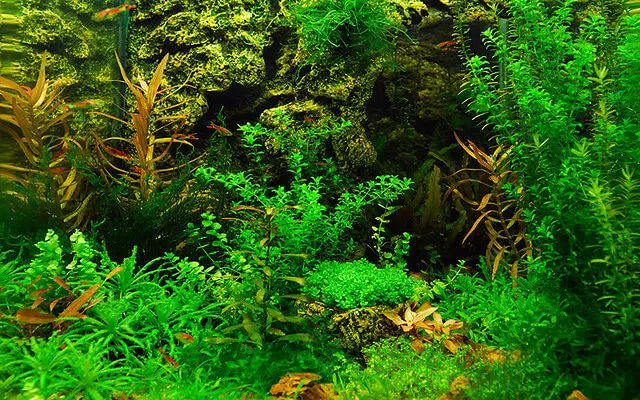Aquarium salt is an amazing resource that’s highly valued in freshwater aquariums. It’s a favorite choice among aquarium lovers because of its many benefits. Instead of just being used as a basic treatment for fish diseases and parasites, it offers so much more. Let’s take a closer look at why adding aquarium salt to your fish tank is a fantastic idea.
Quick Answer:
Think of aquarium salt as a valuable tool for maintaining a healthy aquatic environment. Not only does it help in treating diseases like fungus, flukes, white spots, and velvet disease, but it also does a whole lot more. It reduces osmotic pressure, speeds up wound healing, minimizes stress, prevents nitrite poisoning, and even acts as a preventive measure against various parasitic infections.
So, are you ready to explore the wonderful benefits aquarium salt brings to your underwater world? Let’s dive right in and discover the incredible advantages it can offer to your fish tank!
What Is Aquarium Salt?
Aquarium salt is a special salt blend designed specifically for freshwater aquariums. It contains a mix of sodium chloride (NaCl) and other minerals to replicate the natural environment of freshwater fish.
Unlike regular table salt, aquarium salt doesn’t have additives. Its main purpose is to provide essential electrolytes(minerals in the blood and other body fluids that carry an electric charge), support osmoregulation(the process by which an organism regulates the water balance in its body), and help maintain the overall health of freshwater fish. Remember not to confuse it with iodized or table salt, which have different compositions.
Types Of Aquarium Salt And Their Uses
When it comes to picking the right salt for your aquarium, not all options on the market will do the trick. You need to choose salts that are pure, sterile, and specially designed for aquarium use. Here are the primary types of salt that are perfect for your aquarium water:
1. Freshwater Aquarium Salt
Freshwater aquarium salt is the top choice for your freshwater fish tank. It’s pure, with no extra stuff like iodine or additives. This pure salt is safe for your fish and has many benefits.

Uses of Fresh Aquarium Salt are:
- Balances Electrolytes in Fish: It helps fish keep their electrolytes in check.
- Promotes Healing of Wounds: Speeds up the healing of fish wounds.
- Creates a Healthy Aquatic Environment: It’s great for maintaining a healthy water environment for your fish.
Whether you need it for fish health or general tank care, freshwater aquarium salt is your answer. For specific dosages, follow your vet’s advice. For general tank maintenance, add 1 teaspoon of salt per 5 gallons of water. Remember, use it responsibly and in the right amounts for happy, healthy fish.
2. Non-Iodized Rock Salt
When choosing salt for your aquarium, non-iodized rock salt is a unique option. It’s different from iodized table salt because it doesn’t have iodine. This makes it a good choice for specific needs or dietary restrictions that require careful control of iodine.
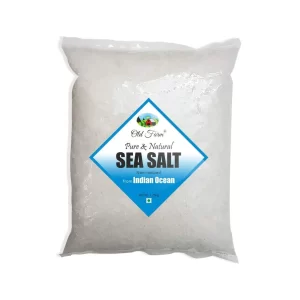
Uses of Non-Iodized Rock Salt are:
- Medication: It can be used for fish medicine.
- Wound Healing: Helps in the healing of fish wounds.
- Promoting Fish Mucus Production: Encourages fish to make their protective mucus.
- Reducing Stress in Fish: It can calm down stressed fish.
- Controlling Parasites: Helps in keeping parasites in control.
Non-iodized rock salt can be used for various purposes in your aquarium. To start, use small amounts and watch how your fish react before adding more. This way, you can make sure your fish stay happy and healthy.
3. Marine Aquarium Salt
Get ready to explore the incredible potential of marine aquarium salt, designed especially for saltwater or marine tanks. This remarkable salt blend is carefully made with essential minerals and elements that work together to keep the water’s pH level just right, creating the ideal environment for your marine ecosystem.
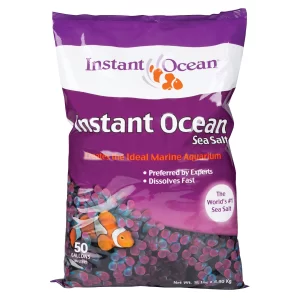
Uses of Marine Aquarium Salt:
- Supplies Vital Minerals: Marine salt provides the important minerals that marine life needs for their health and well-being.
- Promotes Water Chemistry Balance: It helps keep the water’s chemistry balanced, ensuring a stable and healthy aquatic home.
- Maintains Optimal pH Levels: Marine salt keeps the pH levels stable, providing a comfortable home for your saltwater fish and corals.
- Provides Precise Amounts of Calcium, Alkalinity, and Strontium: It gives your marine creatures the exact amounts of these essential elements they need for growth and vitality.
For the best results, choose a high-quality marine mix with a perfectly balanced composition. Look for a salt blend that not only maintains the right pH levels but also provides precise amounts of calcium, alkalinity, and strontium, which are crucial for your saltwater aquarium’s health.
As a general guideline, it’s usually recommended to add about 1/2 cup of marine salt per gallon of water. However, always follow the manufacturer’s instructions for accurate measurements to ensure the well-being of your marine life.
4. Epsom Salt
Epsom salt, also known as magnesium sulfate, offers remarkable benefits for your fishy pals. It’s a natural source of magnesium, which helps boost magnesium levels, ease stress, reduce inflammation, and more. Adding Epsom salt to your aquarium can be a game-changer during swim bladder issues, and stressful times, and for promoting healthy plant growth.

Uses of Epsom Salt:
- Swim Bladder Issues: It’s great for addressing swim bladder problems.
- Stress Reduction: Eases stress for your fish.
- Reducing Inflammation: Helpful for fish with inflammation.
- Supporting Plant Growth: Promotes healthy plant growth in your aquatic environment.
For medication, add 1 tablespoon of Epsom salt per 5 gallons of water. If you want to enhance plant growth, use 1-2 tablespoons per 20 gallons of water. Epsom salt can work wonders, but remember to use it responsibly and in the right amounts.
5. Reef Salt Mix
Reef salt mix is a special blend of salts like sodium chloride, calcium chloride, and magnesium chloride, tailor-made for saltwater aquariums with reef systems. What’s great about it is that it contains all the important minerals and tiny elements that corals and other sea creatures need to flourish in a reef environment, including iodine, iron, and manganese.
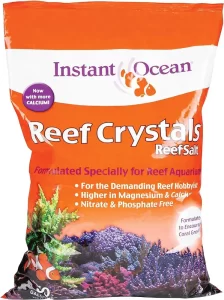
Uses of Reef Salt Mix are:
- Provides Vital Minerals and Trace Elements for Corals and Invertebrates
- Supports Thriving Reef Ecosystems
Now, when it comes to using reef salt mix, there’s a general rule of thumb. You can usually add about half a cup of reef salt mix for every gallon of water in your tank. But remember, the exact amount might vary depending on the brand you choose and the specific salinity requirements of your fish species.
6. Goldfish Salt
Let’s dive into the world of goldfish salt, specially designed for your goldfish tank. Its job is to create a healthy space for your goldfish and help them stay well.
Goldfish salt is made with sodium chloride and good-for-goldfish minerals like calcium, zinc, and copper. These minerals keep your goldfish in tip-top shape.
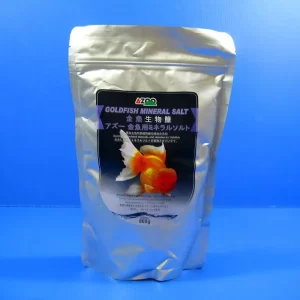
Uses of Goldfish Salt are:
- Promotes Well-being: Goldfish salt helps your goldfish stay healthy and happy.
- Prevents and Treats Diseases: It’s like a natural remedy. You can use goldfish salt every time you change the water in your tank to prevent and treat common goldfish diseases like Ich (white spot disease) and bacterial infections.
To use goldfish salt, just add 1 tablespoon for every 5 gallons of water in your goldfish tank. It’s a simple way to give your fish the right balance they need for a good life.
7. Betta Salt
Prepare to dive into the world of betta salt, specially designed for betta fish tanks. It creates an ideal environment for your betta fish and helps prevent and treat certain diseases, making it an essential tool for betta fish enthusiasts.
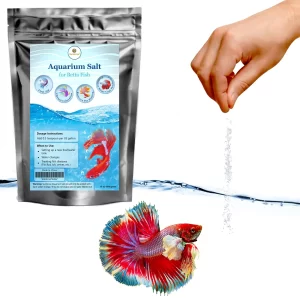
Uses of Betta Salt are:
- Support Betta Health: Betta salt primarily contains sodium chloride and beneficial trace minerals that enhance the health and well-being of your betta fish.
- Disease Prevention and Treatment: It can help prevent and treat common betta fish diseases like fin rot and velvet.
When using betta salt, follow the provided instructions carefully, and be cautious with the amounts you add to the tank. To maintain the right balance, avoid using more than half a teaspoon of betta salt per gallon of water in your betta fish tank.
However, please note that not all freshwater fish can tolerate or benefit from the addition of this salt. It’s essential to research and understand your specific fish species’ needs before using it in your tank.
13 Benefits Of Aquarium Salt
Aquarium salt offers various benefits when used correctly and in the right amount. These benefits can vary depending on the specific needs and tolerance of the fish species in your tank. With the proper guidance and appropriate dosage consideration, you can enjoy the benefits and they are as follows:
1. Prevents From Nitrate Poisoning
Nitrate is a common byproduct of fish waste and decaying organic matter in the aquarium. When nitrate levels become too high, it can be harmful to fish and other aquatic creatures. Aquarium salt prevents nitrate poisoning in your fish tank.
While aquarium salt doesn’t directly lower nitrate levels, it indirectly promotes a healthier environment by enhancing fish osmoregulation and reducing the toxic effects of nitrate. This improves water quality and reduces stress on the fish, making them more resilient to nitrate poisoning.
2. Handles Parasites
Parasites, such as roundworms, tapeworms, thorny-headed worms, and flukes, can be troublesome and harmful to the health of your fish. When you add aquarium salt to your tank, it assists in reducing and controlling the growth of these parasites, benefiting the overall well-being of your fish.
Aquarium salt creates an unfavorable environment for parasites to live in and weakens their ability to reproduce. Additionally, the salt forms a protective layer on the fish, acting as a barrier against external parasites. You can effectively reduce the growth and impact of parasites, ensuring the health and well-being of your fish.
3. Disease Prevention
Aquarium salt serves as a valuable tool for preventing and treating common fish diseases. It can effectively control infections caused by parasites or bacteria, including ich, fin rot, and velvet. The salt creates an osmotic imbalance within the fish’s body, making it difficult for pathogens to survive and reproduce.
Furthermore, aquarium salt can enhance the fish’s immune system, assisting in its ability to fight off infections. It is crucial to note that while aquarium salt plays a role in disease prevention, it should not be relied upon as the sole method of preventing illness.
4. Reduces Stress
Fish can experience stress due to various factors like transportation, water changes, or living in crowded or unstable aquariums. To alleviate this stress, the addition of aquarium salt to the tank proves beneficial. It enhances water quality and establishes a stable environment, reducing stress levels for the fish.
Moreover, salt plays a vital role in combating harmful substances like toxins or heavy metals that might be present in the water. Additionally, it restores essential minerals and electrolytes that fish may lose during stressful situations.
5. Improve Gills Function
Fish depend on the proper functioning of their gills to intake oxygen and release carbon dioxide. Over time, the gills can become obstructed or impaired, affecting this crucial process. To address this, the addition of aquarium salt to the tank can improve gill function.
The salt plays a role in preventing the accumulation of mucus and debris, facilitating efficient gas exchange. Moreover, it stimulates the growth of beneficial bacteria that assist in breaking down waste and organic matter. This results in improved water quality and reduced stress for the fish.
6. Wound Healing
Fish may occasionally sustain injuries or wounds from fights or contact with sharp objects in the aquarium. In such cases, the addition of aquarium salt aids in the healing process by reducing inflammation and inhibiting the growth of harmful bacteria. Also, this salt improves water quality, creating an optimal environment for the wound to heal efficiently.
7. Hatching Brine Shrimp Egg
Aquarium salt provides a significant advantage in promoting the successful hatching of brine shrimp eggs. These eggs, once hatched, serve as a highly nutritious food source for fish and other aquatic creatures. The aquarium salt establishes an optimal environment for the eggs to hatch by maintaining the required salinity and pH levels. As the eggs hatch, the resulting brine shrimp provide a high-quality protein food that can be fed to the fish, gradually promoting their health with essential nutrition.
8. Treatment Of White Spot And Velvet
White spots and velvet are common diseases that can affect fish. This aquarium salt serves as an effective treatment for these conditions. If you notice small spots, granular lesions, or fluffy gray layers on the fish’s body, fins, or gills, it may indicate the presence of a white spot or velvet disease.
In such cases, adding aquarium salt to the tank can aid in combating these diseases. The salt creates an unfavorable environment for the pathogens responsible for these conditions to thrive. Plus, it smoothens the fish’s skin and supports its immune system by promoting the production of protective mucus.
9. Electrolyte Balance
Aquarium salt plays a vital role in maintaining the overall health and well-being of fish by ensuring electrolyte balance. It contains essential minerals and electrolytes like sodium, chloride, and potassium, which help fish cells maintain the necessary osmotic balance.
Stressful conditions such as transportation, water changes, or disease can cause fish to lose electrolytes and become imbalanced. Adding aquarium salt to the water replenishes these lost electrolytes and helps to maintain a stable internal environment, particularly benefiting freshwater fish species that naturally inhabit brackish water and require higher salt concentrations for optimal functioning.
10. Osmoregulation Support
Osmoregulation is the scientific term used to describe how fish can keep the right amount of water and substances in their bodies to match the environment they live in. When you add aquarium salt to their water, you’re making it a little saltier than normal freshwater. This small increase in salt concentration helps the fish deal with osmotic stress by making it easier for them to control the movement of water and ions through their gills and skin.
Using aquarium salt for osmoregulation support is especially helpful when fish are stressed or sick because it assists them in maintaining their internal balance. It also helps them adjust to changes in the water, like sudden shifts in saltiness, and aids in their recovery from diseases such as ich (white spot disease).
11. Improve Fish Behavior
In some cases, the addition of aquarium salt can lead to noticeable improvements in fish behavior.
Fish kept in water with the appropriate salt concentration tend to exhibit reduced stress levels, increased activity, and an improved appetite. This improvement is especially notable in species naturally inhabiting brackish water or having evolved to tolerate slightly saline environments.
The presence of aquarium salt in the water creates a more familiar and comfortable environment for these fish, leading to a reduction in stress-related behaviors such as hiding, lethargy, or loss of appetite.
Additionally, improved behavior positively impacts the overall health and vitality of the fish, contributing to their overall well-being.
12. General Fish Health Support
We have observed that aquarium salt provides general health benefits for fish. It acts as a mild antiseptic, helping to prevent and treat certain external parasitic infections and fungal diseases.
The salt in the water creates an environment that is unfavorable for parasites and pathogens, reducing their growth and ability to harm fish. Moreover, the slight increase in salt concentration supports the fish’s natural slime coat, which acts as a protective barrier against diseases, injuries, and osmotic stress. The enhanced slime coat also aids in wound healing and provides additional protection against secondary bacterial infections.
However, it’s essential to use aquarium salt with caution and in appropriate concentrations. Excessive salt levels can be harmful to some freshwater fish species, especially those that are sensitive to salt or come from soft water habitats.
13. Water Chemistry Management
Understanding water chemistry is essential for maintaining the well-being of your fish. Gaining knowledge about water chemistry greatly improves your ability to care for them successfully.
Aquarium salt proves to be a valuable tool in managing water chemistry as it helps to maintain appropriate salinity levels and supports the overall health of your fish.
Utilizing aquarium salt enables you to achieve and maintain optimal water parameters, creating an ideal habitat for your fish.
Learning proper water maintenance techniques empowers you to perform regular water changes, effectively clean and maintain filtration systems, and promptly address any issues that may arise. These proactive steps will create a favorable environment for your fish, promoting their overall health and reducing the risk of water-related problems.
How Much Aquarium Salt Should You Use?
If you’re wondering how much aquarium salt to use, I’ve got you covered. It’s important to get the right amount to make sure it has a positive effect on your tank. Adding too much or too little can harm your aquatic buddies. So, let’s dive in!
The quantity of aquarium salt you should add depends on a few factors. First, consider the needs of your fish and the type of salt you’re using. For freshwater aquariums, a general rule is to add around 1 tablespoon of salt for every 5 gallons of water. However, keep in mind that different types of aquarium salt might have their own recommended dosages.
For saltwater aquariums, things are a bit different. Typically, it’s advised to add about 1/2 cup of salt for every 10 gallons of water. Remember, saltwater tanks require a different approach than freshwater ones.
Now, it’s vital to note that not all fish species are comfortable with aquarium salt. Some are more sensitive to it than others. To ensure the well-being of your aquatic friends, I recommend researching and following the instructions provided with the specific product you’re using. These instructions will guide you on the best way to use the salt for your particular fish and tank.
How Often Should I Use Aquarium Salt?
Hey there! Curious about how often you should use aquarium salt in your fish tank? Well, it all depends on why you’re adding the salt and the specific conditions you’re dealing with. Let’s break it down!
If you’re using aquarium salt as a general tonic to boost fish health and reduce stress, it’s generally recommended to add it during your regular water changes. These water changes usually happen every 4 to 6 weeks. Over time, you’ll get a hang of the right amount and duration for adding the salt. Remember, consistency is key!
However, if you’re using salt for specific medications or treatments, it’s essential to follow a different timeline. Typically, these treatments should last for about 7 to 14 days. It’s essential to stick to the recommended duration to ensure effectiveness and avoid any potential harm.
Now, some fish may have special health conditions or requirements that call for more frequent or longer-term use of aquarium salt. In such cases, it’s crucial to do your research and understand the specific needs of the fish species in your tank. If you’re unsure, it’s always a good idea to consult with a veterinarian or an aquarium specialist who can provide expert advice.
Remember, it’s better to seek guidance from professionals rather than trying to be a specialist on your own. They can offer valuable insights tailored to your fish’s well-being.
How To Properly Add Aquarium Salt To Your Tank?
You will require proper guidelines and instructions to make sure about the effective and safe use of aquarium salt in your fish tank. These beneficial practices can avoid the risk and prevent you from harming the fish or other aquatic life. So, here is a step-by-step guide on how to properly add aquarium salt to your tank:
Step 1: Choose The Right Type Of Salt
Various options of aquarium salt are available and each salt has specific purposes and aquarium types. It’s essential to read the label carefully and choose the right salt for your particular tank. For instance, reef salt mixes are ideal for saltwater tanks with coral, while goldfish salt is specifically designed for freshwater tanks housing goldfish. This will make sure that there is optimal compatibility and effectiveness of salt in your aquarium. If you add reef salt mixes in a freshwater tank, there is a high chance that your whole aquarium will collapse within a few hours.
Step 2: Determine The Appropriate Dosage
After selecting the suitable salt, it’s essential to determine the correct dosage for your tank. The recommended dosage varies depending on the type of salt and the size of your aquarium. To ensure accuracy, refer to the instructions provided on the packaging of the aquarium salt. These instructions will guide you on the appropriate amount to add.
It’s necessary to follow the instructions serially with care to avoid adding excessive salt to your tank. Otherwise, it can have negative effects on the well-being of your fish and other aquatic inhabitants.
Step 3: Dissolve The Salt Before Adding It To The Tank
You can take a small amount of tank water in a clean container and add the appropriate amount of salt to it. Use a spoon and stir it continuously until it gets completely dissolved. You can also use warm water, as it helps the salt dissolve more quickly and effectively compared to cold water.
Once the salt is fully dissolved, you can add the solution to your tank, distributing it evenly throughout the water. This will make sure that the salt is evenly distributed and prevents clumping or settling in the tank.
Step 4: Monitor The Salt Levels In Your Tank
After adding salt to your tank, it’s time to monitor the salt levels regularly to maintain stable salinity. You can achieve this by using a salinity meter or conducting regular water tests with a water testing kit.
Carefully follow the instructions provided with these tools to obtain accurate readings. You can ensure that the salinity remains within the desired range for the health and well-being of your aquarium inhabitants.
Step 5: Avoid Sudden Changes In Salinity Level
Rapid fluctuations in salinity can cause stress and harm to your aquatic inhabitants. If you need to adjust the salinity levels, it’s recommended to do so gradually for several days or weeks.
This gradual adjustment allows your fish and other creatures to adapt to the changes without experiencing any negative effects. So, this precautionary approach can ensure the well-being and overall health of your aquarium inhabitants.
How To Use Aquarium Salt To Treat Infections?
Before you proceed to use aquarium salt as a treatment for infections in your aquarium, it is important to have a proper understanding of the treatment process with caution. Here are some elaborations on the key points for using aquarium salt to treat infections:
Step 1: Fill A Bucket With Aquarium Water
To minimize stress on your fish during treatment, fill a bucket with water taken directly from your aquarium. Using aquarium water helps maintain similar temperatures, pH, and other water chemistry parameters. It creates a comfortable and familiar environment for your fish during the treatment process.
Step 2: Prepare The Salt Solution
Read the instructions carefully on the package of aquarium salt. You can determine the correct dosage for treating the specific infection in the fish tank. Add the prescribed amount of salt to the bucket of aquarium water and thoroughly dissolve it.
Stir the water gently until the salt is completely dissolved, ensuring an even distribution of salt throughout the solution. This will help to create an effective treatment solution for your fish.
Step 3: Place The Fish In The Saltwater Treatment
Handle the fish with care, using a fishnet or a gentle tool, and transfer them to the prepared saltwater solution. Make sure that the fish is submerged in the solution, allowing the salt to come into contact with their skin and gills.
The recommended duration for the salt bath is typically 10-15 minutes. During this time, the salt will work to combat parasites or bacteria causing the infection. Look at the fish’s behavior and any signs of distress during the treatment process.
Step 4:Transfer The Fish To A Quarantine Tank
You should prepare a quarantine tank with clean water, suitable temperature, and proper filtration. Carefully transfer the fish from the saltwater solution to the quarantine tank, taking care not to cause any additional stress or injury.
Keep a close eye on the fish in the quarantine tank to see if their condition improves or worsens after the salt treatment. You can observe if there is any effectiveness in their health after treatment, and decide if any further actions or treatments are needed.
Step 5: Treat The Main Aquarium To Prevent Reinfection
Make sure the infection doesn’t return or spread to other fish in the tank. Simply, treat the main aquarium with aquarium salt in the appropriate dosage as per the instructions on the package. Regularly monitor the salt levels and water quality in the tank, and perform necessary water changes. This will help maintain a healthy environment and minimize the risk of reinfection.
It’s important to remember that while aquarium salt can be an effective treatment for some infections, it may not be suitable for all types of infections or all fish species. Always research the specific needs of your fish and consult with a veterinarian or aquarium specialist if you have any questions or concerns about using aquarium salt to treat infections.
Precautions While Using Aquarium Salt
Though aquarium salt provides numerous benefits, you need to handle it with care. It’s essential to exercise caution and take necessary precautions to ensure its safe and effective use. Here is a list of precautions you should take while using aquarium salt, they are as follows:
1. Never Salt Your Freshwater Aquarium Unnecessarily
Aquarium salt offers certain benefits such as treating infections or health issues, but it’s important not to use it unnecessarily. Adding salt to your tank without a specific reason can lead to an excessive increase of salt over time, which can have negative effects on your fish and plants.
It may disrupt the balance of your tank’s ecosystem and impact the overall health and well-being of your aquatic inhabitants. Furthermore, it can cause increased stress levels, hinder osmoregulation, and even result in long-term damage or illness. So, you should introduce aquarium salt only for a specific purpose in your fish tank.
2. Maintain A Light Concentration Of Aquarium Salt
Even if you are using aquarium salt for a specific purpose in your tank, do not add more than the recommended amount. You can see the recommended dosage provided on the package of aquarium salt.
Otherwise, it can disrupt the delicate balance of your fish’s internal systems and compromise their overall health. It will help you minimize the risks associated with excessive salt concentration in your freshwater aquarium.
3. Using Aquarium Salt for Medicinal Baths for Sick or Infected Fish
Aquarium salt can be an effective treatment for certain fish ailments, but it should be used in small amounts and only when necessary. Also, limit the frequent use of aquarium salt as medicinal baths for sick or infected fish.
There are specific therapeutic purposes under the guidance of a veterinarian or aquarium specialist. So, you should ensure that the treatment meets the targeted amount of salt to unnecessary stress or potential complications.
Overall, the key to using aquarium salt safely and effectively is to use it in limited amounts and only when necessary. Always research the specific needs of your fish and monitor your water chemistry closely to ensure that you’re maintaining a healthy environment for your aquatic pets.
When Not To Use Aquarium Salt In Your Tank?
As you know, aquarium salt is beneficial in various situations, but there are specific conditions when it’s best to avoid using salt in your fish tank. So, here is a list of some circumstances where you should not use aquarium salt to ensure the well-being of your fish, they are as follows:
1. Planted Aquarium
In a planted aquarium, it is generally not recommended to use aquarium salt or to use it very cautiously. Salt can disrupt the osmotic balance of plant cells, affecting their ability to take up water and nutrients, and can be harmful to certain plants, especially those that are sensitive to salt.
This will directly damage the leaves and tissues causing wilting, stunted growth, and even plant death. Furthermore, it can negatively impact beneficial organisms like bacteria, snails, and shrimp in the aquarium. Instead, let the plant grow by providing proper lighting, nutrient supplementation, and maintaining optimal water parameters.
2. Scaleless Fish Tank
Certain species of fish such as catfish, loaches, and eels lack scales. So, if you have these fish in your aquarium, you shouldn’t add salt as they are highly sensitive to it. The use of aquarium salt can harm scaleless fish, as it can compromise the delicate nature of their skin and make them more susceptible to diseases and infections.
It can disrupt the protective mucus layer on their skin, leading to increased stress and the potential for skin irritation and damage. So, it is better not to use aquarium salt in their tank to maintain a suitable and harmonious environment for their survival.
3. Soft Water Fish Tank
Fish like Discus or Cardinal Tetras, prefer soft water conditions in their tank. Aquarium salt has the potential to increase the hardness of the water, which can be problematic for these fish species and other aquatic organisms that thrive in soft water environments.
So, if you add salt to a soft water fish tank and try to alter the water hardness, it will disrupt their osmoregulation processes, impacting their overall well-being. You should understand the proper tank and water requirements of the fish you choose for your tank before it gets too late.
4. Certain Medications
If your fish is suffering from any illness and you are doing certain medications on them, you should avoid adding salt to the tank. Some medications may interact negatively with salt which can make the illness even worse.
You can place the sick fish in a separate tank with similar water conditions which is free from aquarium salt. I advise you to consult with a veterinarian or aquarium specialist before introducing any medications or treatments into your tank.
5. Invertebrates
The presence of aquarium salt can have harmful effects on certain invertebrates, including snails and shrimp, due to their high sensitivity to fluctuations in water chemistry. Even small amounts of aquarium salt can pose a significant risk to these delicate creatures. Therefore, if your tank contains invertebrates, it is recommended to either avoid using aquarium salt or consult with the experts and use a small amount, if necessary.
So, avoid aquarium salt in these conditions for better health and safety of your fish and other aquatic creatures. Take the time to research the specific needs of your aquarium inhabitants and seek advice from a veterinarian or aquarium expert if you have any questions or concerns.
Frequently Asked Questions (FAQs)
Here are some of the frequently asked questions related to aquarium salt, they are as follows:
Does Aquarium Salt Reduce Oxygen?
No, aquarium salt does not directly reduce oxygen levels in the water. However, if used improperly, aquarium salt can cause stress on fish, leading to increased respiration and oxygen demand. Additionally, if the salt is not fully dissolved before adding to the tank, it can settle and accumulate on the bottom of the tank, reducing oxygen levels in that area.
Does Aquarium Salt Make Water Cloudy?
Adding aquarium salt to your tank should not make the water cloudy if done properly. However, if too much salt is added or if the salt is not fully dissolved before adding it to the tank, it can cause cloudiness in the water. Additionally, if there are other issues with your tank, such as excess waste or algae, this can also contribute to cloudiness. It’s important to follow the correct dosage recommendations for aquarium salt and ensure it is fully dissolved before adding it to the tank to avoid cloudiness.
Can I Add Aquarium Salt Directly To My Tank?
No, you should never add dry salt mix directly to your saltwater aquarium. Always dissolve the salt mix in fresh RO/DI water first and then use that saltwater inside your aquarium. The amount of salt mix you need varies depending on the size of your aquarium and the specific needs of your fish and other aquatic life.
What Is The Salinity/Specific Gravity You Need?
The salinity or specific gravity you need for your aquarium will depend on the specific needs of the fish and other organisms living in it. Generally, a specific gravity of 1.020-1.025 is recommended for most marine aquariums, while a specific gravity of 1.000-1.003 is recommended for freshwater aquariums.
Conclusion
Hence, aquarium salt is a beneficial tool for maintaining a healthy aquarium environment. As outlined in this article, the benefits of aquarium salt include disease prevention, stress reduction, improved gill function, wound healing, and hatching brine shrimp eggs. When using aquarium salt, it’s important to choose the right type of salt, determine the appropriate dosage, dissolve the salt before adding it to the tank, monitor the salt levels in your tank, and avoid sudden changes in salinity levels.
For beginners, aquarium salt is not as challenging as it seems. With proper research and guidance, it can be a valuable addition to your fishkeeping toolkit. Always make sure to educate yourself on the proper usage and dosage before introducing aquarium salt into your tank.
Finally, we encourage all fishkeepers to stay connected and enjoy the hobby of fishkeeping. Whether you are a beginner or an experienced aquarist, there is always something new to learn and discover in this fascinating world. By incorporating aquarium salt into your routine, you can ensure that your fish remain healthy and happy for years to come.






